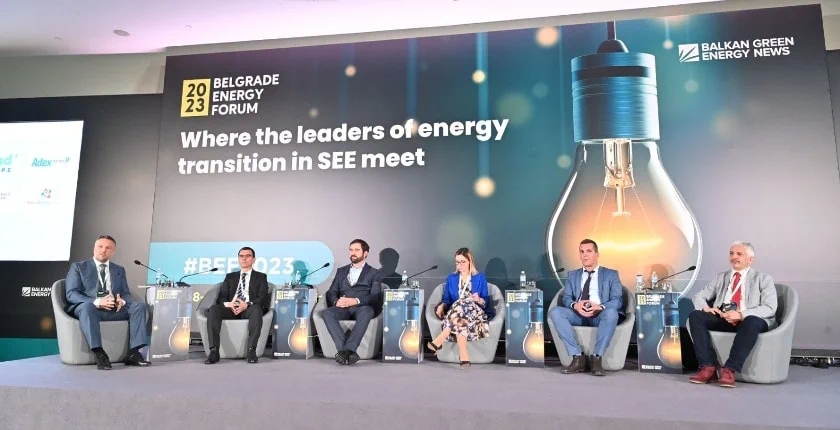
Photo: Balkan Green Energy News
Published
May 17, 2023
Country
Author
Share
Published:
May 17, 2023
Country:
Author
Share
To realize the potential for the much-needed energy storage and balancing, it is necessary to establish strong inter-sectoral cooperation and integrate the district heating system with the electricity sector, according to the panel Modern technologies for sustainable heating and cooling, held on May 8 as part of Belgrade Energy Forum – BEF 2023. The deployment of new technologies and thermal energy storage can provide additional balancing for intermittent energy production from renewable sources, panelists agreed.
Energy from renewable sources, wind and solar, complements the decarbonization of district heating systems, said Bojan Bogdanović from the European Bank for Reconstruction and Development (EBRD), who moderated the panel.
Bogdanović: Energy from wind and solar complements the decarbonization of district heating systems
The potential of the district heating sector is enormous. Globally, over 50% of total primary energy is used for heating and cooling (mainly heating). However, the current situation is far from ideal.
At district heating plants in Serbia, the share of clean energy sources is only about 1.5%, and in the Western Balkan region that share is about 3%, out of a total of 9 GW of installed capacity.
The sector still relies heavily on fossil fuels. To change that, and establish a more sustainable system, it is necessary to integrate heating and cooling systems with the power sector, the panelists agreed. They also stressed the importance of introducing new technologies in district heating systems.
Panelists agree it is necessary to integrate heating and cooling systems with the power sector
This sector can help, more than all others, to decarbonize urban areas, and we must deal with it as part of the energy transition, according to Bogdanović.
In March this year, the European Union published guidelines for the development of energy storage capacities, recommending that countries put special focus on thermal energy storage capacities as providers of balancing services and address them in national energy and climate plans (NECP), Bogdanović noted.
For this reason, the panel on sustainable heating and cooling held at BEF 2023 stressed the need to promote balancing diversification, but also a strategic approach to it, as a key issue for all stakeholders, which must be pursued vigorously.
EPS mulls thermal storage for renewable energy balancing
Aleksandar Latinović, Head of Ancillary Services at Elektroprivreda Srbije (EPS), said Serbia’s state-owned power utility is trying to make the most out of the inter-sectoral cooperation of the electricity and district heating systems, in terms of concentrated, manageable consumption and the dispatch of excess output from renewable sources.
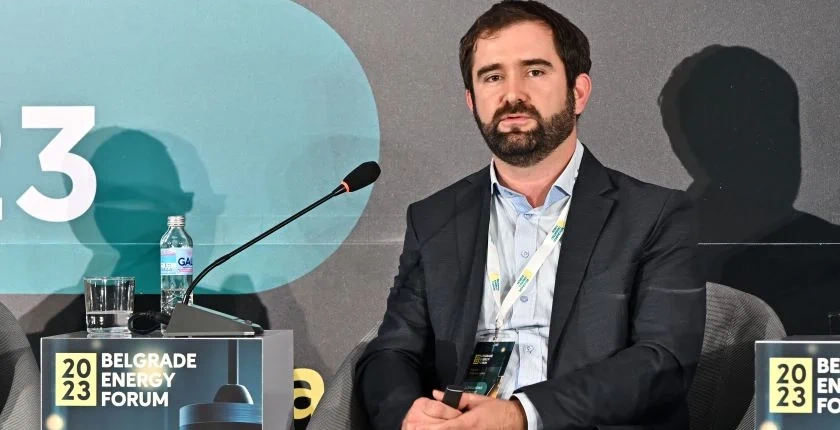
The strong growth of renewables also brings challenges, according to Latinović. Wind and solar are intermittent energy sources, which creates the two greatest challenges for the electric power system – short- and long-term balancing.
The former refers to balancing power generation in real time, in time intervals of up to one hour, while the latter is the balancing of production and consumption in longer periods – weeks, seasons, years. Latinović said that inter-sectoral cooperation can help solve both of these challenges.
Electricity surpluses from renewables can be converted into heat, so that they can be stored in thermal storage capacities, reducing the use of fossil fuels in heating, he explained.
In this way the lowest price of electricity from renewables could be limited in case of significant electricity surpluses in the power system.
That would reduce the risk for financiers of renewable energy projects as their clients would have more predictable energy sales, making it easier for them to repay loans, he added.
On the other hand, thermal energy storage and the electrification of district heating are significant for EPS in terms of manageable electricity consumption, which can provide significant amounts of balancing reserves.
A study commissioned by EPS, which was based on renewables development scenarios, showed that balancing the system beyond 2030 will require reserves of about 1 GW.
Balancing the power system beyond 2030 will require reserves of about 1 GW
New thermal storage capacities would help boost balancing reserves through manageable consumption at facilities that would convert electricity into heat, according to him.
Latinović: New thermal storage capacities would help increase the balancing reserve through manageable consumption
Latinović stressed the importance of linking the power and district heating sectors, in order to increase renewables integration.
EPS also sees this process as an opportunity to remain a leader in the provision of balancing services, while it can also achieve the lowest possible cost of renewables integration, ensuring in turn the lowest price of energy for consumers.
Also, all new renewable energy projects seeking grid connection will be required to provide 200 kW of new balancing capacity for each installed megawatt of intermittent renewable sources, said Latinović.
He also hopes that financiers will recognize the potential of investing in thermal energy storage, mainly given that such projects could reduce risks in financing variable renewables.
Heating plants support integration with power system
Dušan Macura, Head of Production and Distribution at the Novi Sad District Heating Company (Novosadska toplana) agreed it is necessary to establish inter-sectoral cooperation between electric power and district heating systems, as is the strategic course of modern district energy systems. We are now expected to make existing district energy systems sustainable, he said.
Solar thermal technology with seasonal heat storage has become conventional, Macura said, noting that it has been demonstrated and proven in practice in Denmark, Germany, and France.
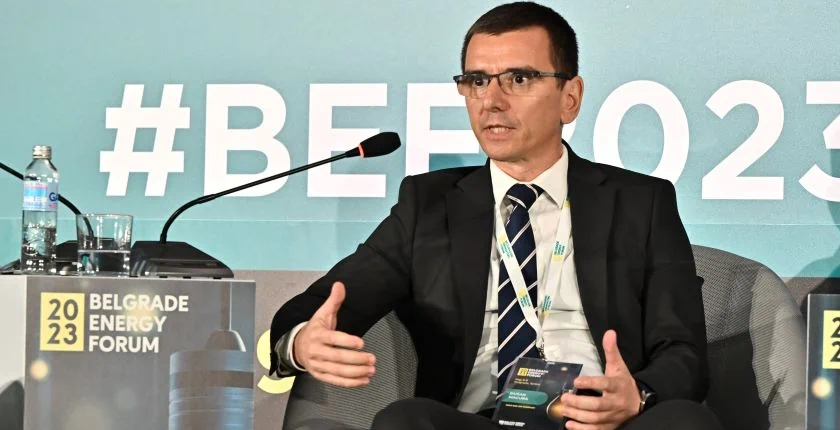
However, the revolution is in new technologies that are being developed, such as thermal energy grid storage (TEGS), which can store renewable electricity surpluses from solar and wind with a 60% efficiency rate, higher than hydrogen, he said.
Macura: The revolution is in new technologies that can store renewable electricity surpluses with 60% efficiency
The Novi Sad District Heating Company and EPS are developing a solar thermal project with support from the Ministry of Mining and Energy and the EBRD. The plan is to build a large solar thermal facility for energy storage on about 20 hectares of land in the vicinity of the gas-fired cogeneration plant TE-TO in Novi Sad, Serbia’s second-largest city. The project is targeted for completion by 2028.
Support for decarbonization in district heating and cooling
Biljana Grbić, Consultant at the Energy Community Secretariat, noted that the district heating and cooling sector will also be required to pay carbon taxes soon, which means that decarbonization is not only a priority for EPS or the electric power system.
The heating and cooling sector has already become part of the EU’s Emissions Trading System (EU ETS), and this is expected to happen in Serbia and the region as well. The first step towards an ETS will be to transpose and implement the EU’s Measurement, Reporting, and Verification (MRV) package for carbon emissions. Energy Community contracting parties should transpose the package into their national legislation by the end of this year.
Together with the Energy Community, the EBRD is working on the modernization of the district heating system in the region, but primarily at the regulatory level.

Modernizing district heating and cooling systems requires strategic documents, as well as development plans for heating plants elaborating measures to achieve the efficiency standards set out in the EU’s Energy Efficiency Directive. This means at least 50% of renewables, 50% of waste heat, 75% of heat from cogeneration or 50% of all of these combined, she noted.
At the panel, representatives of the Serbian office of the Swiss State Secretariat for Economic Affairs (SECO) also presented its agenda and priorities, particularly the support to the district heating and cooling sector.
EPBiH plans to decarbonize through carbon pricing
In Bosnia and Herzegovina, the decarbonization of the district heating sector was launched in cooperation with the EBRD, while the country’s biggest electricity company Elektroprivreda BiH (EPBiH) has introduced an internal carbon pricing mechanism.
Anes Kazagić, Head of Strategic Development at EPBiH, said that the power utility has prepared for carbon pricing in line with EU regulations.
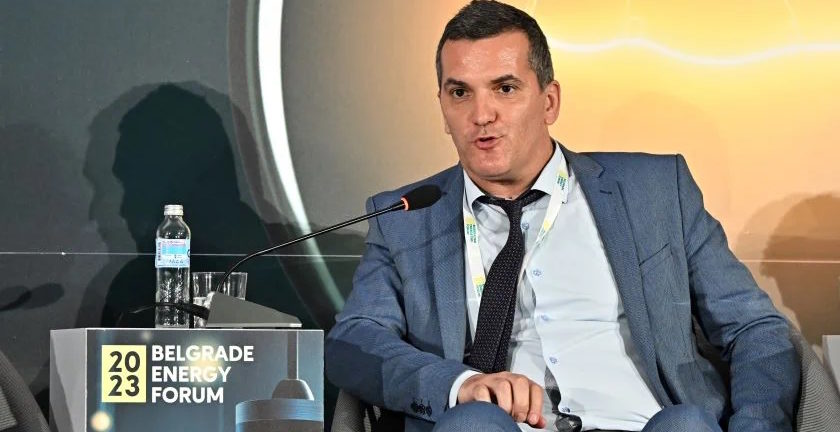
EPBiH is implementing carbon taxation gradually. It started in 2021 with a 5% charge on emissions in the Tuzla and Kakanj thermal power plants, and the plan is to increase the tax by five percentage points each year, Kazagić explained. According to him, it is a realistic approach, which will make it possible to carry out the energy transition in a reasonable period, over the next 20 years.
Also, EPBiH expects the process to be sustainable and that it will ensure the security of supply and the transition of power utilities towards renewable energy sources.
Revenues from the carbon tax are earmarked for renewables development. In 2021, the internal carbon tax amounted to EUR 12 million, and the figure increased to EUR 35 million in 2022. The funds were allocated for the 45 MW Gračanica solar power plant, Kazagić said.
The management of EPBiH believes that after 2030 seasonal heat storage would be the dominant technology
EPBiH generates 5% of the heat for district heating systems. The management believes that after 2030 seasonal heat storage would be the dominant technology. The utility already started the transition of the district heating sector through the introduction of biomass cofiring technology in cogeneration units in coal power plants Tuzla and Kakanj, Kazagić said.
The new technologies include solar thermal and seasonal heat storage systems within the thermal power plants and former salt mines, Kazagić said.
Renewables share to climb to one quarter by end of decade
Director of the Serbian Association of District Heating Plants Dejan Stojanović pointed out that one should neither forget local and national regulations nor the buyers i. e. consumers, who primarily focus on the price as well as the stability of supply.

Serbia has 60 district heating systems with almost 6 GW in overall installed capacity. Without any large network investment, an extra 215 GWh could currently be produced for district heating systems, he stressed.
Stojanović asserted that calculations through 2030 show that biomass doesn’t have as strong a potential as perceived and that it is 370 GWh. The potential for municipal waste is around 300 GWh and heat pumps can secure up to 150 GWh of energy. Another plan is for many district heating plants to set up solar panels on roofs and certain degraded land, for own consumption, in addition to solar thermal facilities with nearly 400 GWh in total.
Summing it all up for the period until 2030, district heating plants in Serbia could secure one quarter of energy from renewable sources and additional waste heat, Stojanović revealed.
Stojanović: In essence, regulatory frameworks on the local and national levels need to be combined and a new law on district heating needs to be adopted
In essence, regulatory frameworks on the local and national levels need to be combined and a new law on district heating needs to be adopted. Stojanović concluded that a separate law must regulate the sector rather than to have district heating systems spread across ten laws.
In Serbia’s draft Integrated National Energy and Climate Plan (INEKP or NECP), the biggest ambition is to lower emissions in the heating and cooling sector and decarbonize it. It is the sector that requires the most effort to achieve its specific 2030 renewable energy target share of around 25%.
As said before, the share of renewables in the heating and cooling sector is only 1.5%. There is an ambitious endeavor ahead in the district energy sector as well as in improving energy efficiency and achieving savings and reducing energy consumption.






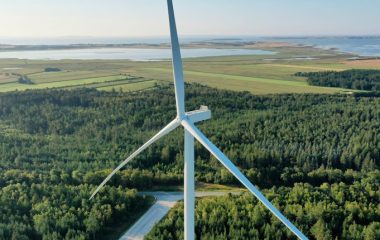


Be the first one to comment on this article.